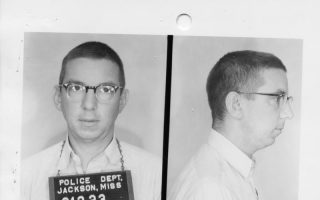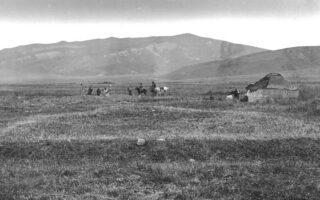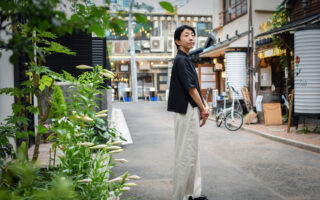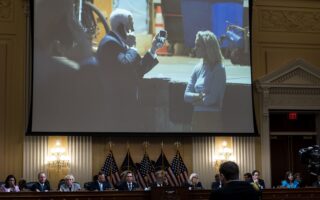The killing of Shireen Abu Akleh: Tracing a bullet to an Israeli convoy
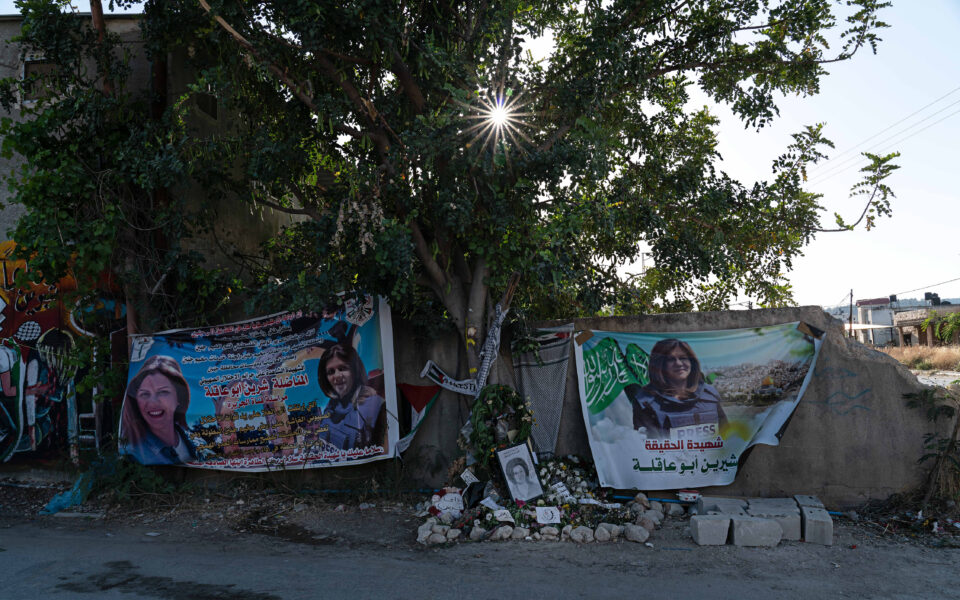
JENIN, West Bank — The journalists thought they were safe.
Several blocks away, a gunfight between Israeli soldiers and Palestinian men had just stopped. Hoping to interview witnesses, the group of reporters headed down the street toward an Israeli military convoy. Among them was Shireen Abu Akleh, a veteran Palestinian American television correspondent.
Suddenly, six bullets flew toward them, and they ran for cover. Abu Akleh crouched next to a carob tree.
Seven more shots rang out.
“Is anyone injured?” a bystander, Sleem Awad, yelled, before seeing Abu Akleh slumped facedown on the ground. “Shireen! Shireen!” he shouted, having recognized the well-known journalist. “Oh man, Shireen!”
Palestinian officials said Abu Akleh was intentionally killed early May 11 in the West Bank city of Jenin by an Israeli soldier. Israeli officials said a soldier might have shot her by mistake but also suggested that she might have been killed by a Palestinian gunman. The Israeli army’s preliminary investigation concluded that it was “not possible to unequivocally determine the source of the gunfire.”
A monthlong investigation by The New York Times found that the bullet that killed Abu Akleh was fired from the approximate location of the Israeli military convoy, most likely by a soldier from an elite unit.
The evidence reviewed by the Times showed that there were no armed Palestinians near her when she was shot. It contradicted Israeli claims that, if a soldier had mistakenly killed her, it was because he had been shooting at a Palestinian gunman.
The Times investigation also showed that 16 shots were fired from the location of the Israeli convoy, as opposed to Israeli claims that the soldier had fired five bullets in the journalists’ direction. The Times found no evidence that the person who fired recognized Abu Akleh and targeted her personally. The Times was unable to determine whether the shooter saw that she and her colleagues were wearing protective vests emblazoned with the word “Press.”
5 a.m., May 11
A correspondent for Al Jazeera, Abu Akleh, 51, was a household name in the Middle East. She had reported on the Israel-Palestinian conflict and Israel’s occupation of the West Bank for more than two decades. Now, she was the latest casualty.
Her killing drew global outrage, and for Palestinians it came to embody the dangers and frustrations of living under Israeli military occupation. Palestinian deaths rarely attract international scrutiny, and soldiers accused of crimes against Palestinians in the West Bank are rarely convicted.
Abu Akleh had come to Jenin that day to cover Israel’s ongoing military raids on the city.
In the weeks leading up to that day, a wave of Palestinian attacks had killed 19 Israelis and foreigners, and some of the attackers had come from the Jenin region. In response, the Israeli military launched a series of raids into Jenin, sometimes to make arrests, and the soldiers were often met with Palestinian gunfire.
As the sun was rising May 11, another raid was kicking off.
About 5 a.m., a Jenin resident, Fatima al-Hosari, saw reports on social media that a military raid was underway and feared the army was coming for two of her sons. A third son had been killed in a gunfight during an Israeli raid on Jenin in March. Now two others were wanted by the army, accused of militant activity.
As Israeli soldiers closed in on their home — in a dense neighborhood populated mainly by the descendants of Palestinians who fled or were expelled from their homes during the 1948 war surrounding Israel’s creation — al-Hosari woke her sons and told them to run.
Moments later, Israeli soldiers arrived at their door, blowing it open with explosives and storming the home, according to family members. The soldiers demanded to know the brothers’ whereabouts, but their parents refused to tell them.
The soldiers turned to an adjacent building where they suspected the brothers might be hiding. They forced their way inside and up to the second floor, family members said. And from a window on the second floor, they exchanged fire with Palestinian gunmen to their south.
Three miles to the north, a convoy of five Israeli military vehicles was entering the West Bank, led by an Israeli MDT David armored vehicle.
5:45 a.m.
About 5:45 a.m., Abu Akleh was awakened at her hotel on the outskirts of Jenin by a call from Ali Samoudi, 54, a longtime Al Jazeera producer, who urged her to get to the scene of the raid as soon as possible.
She met three Al Jazeera colleagues in the hotel parking lot. They donned bulletproof vests marked “PRESS” in large letters and then drove to the edge of the al-Hosaris’ neighborhood.
Samoudi was already there along with two freelance journalists: Mujahed Saadi, 35, and Shatha Hanaysha, 29.
As the journalists gathered, the Israeli convoy, sent to extract the soldiers involved in the raid, arrived on a nearby road, New Camp Street.
The military raid appeared to be winding down, and the journalists wanted to walk down New Camp Street, past the convoy, toward the al-Hosaris’ house, the surviving journalists said.
But they waited a few minutes at the top of New Camp Street, intending to gauge the reaction of the soldiers before approaching the convoy. Had the soldiers wanted them to keep their distance, the journalists said, they would have expected some kind of warning, perhaps a few shots fired into the air.
6:24 a.m.
Awad, 27, had been following the raid on social media and ventured outside to see for himself. At 6:24 a.m. he began livestreaming video on TikTok.
The atmosphere was relatively calm, Awad’s video shows.
Abu Akleh and her colleagues started down New Camp Street toward the al-Hosari home, where the gunfire had subsided.
It was 6:31 a.m., two minutes since the last gunshot.
6:31 a.m.
The shooting began again a few seconds later — a burst of six shots heard in Awad’s video.
“They’re shooting at us,” Samoudi shouted. He turned around, he said, and felt his back explode as a bullet pierced his protective vest and tore through his left shoulder.
“‘Ali’s been hit; Ali’s been hit!’” Abu Akleh shouted, Samoudi recalled. It was the last time he would hear her voice.
Saadi, one of the freelance journalists, jumped into an unfinished building. The other, Hanaysha, took cover next to a wall, behind a carob tree.
Abu Akleh crouched on the other side of the tree, her back to the Israeli convoy, video taken by the team’s cameraman, Majdi Bannoura, showed.
Then seven more shots rang out.
The Palestinian Authority, which administers parts of the West Bank, said its autopsy showed that one of those bullets entered Abu Akleh’s skull from behind, exited her forehead and hit the inside of her helmet before ricocheting back into her head.
Crouched near her, Hanaysha frantically stretched out her hand toward Abu Akleh’s limp body, video shows. But the bullets were still coming, forcing Hanaysha to remain behind the tree.
“Whoever shot at us should have seen us beforehand,” Hanaysha said. “We thought we were safe.”
The investigations
On May 26, the Palestinian Authority said that its investigation, which included the autopsy and a forensic examination of the bullet, found that Israeli soldiers had killed Abu Akleh with an armor-piercing bullet. Palestinian officials accused the Israelis of killing her intentionally, citing the fact that she had been shot in the head from behind while wearing a vest that identified her as a journalist.
The bullet became the focus of the Palestinian investigation and a separate one conducted by the Israelis because the etchings could match it to the gun that fired it.
Israel called for a joint inquiry and for the bullet to be examined under international supervision, the only way, Israeli officials and experts said, to match a bullet conclusively to a particular weapon.
But Palestinian leaders rejected this request, saying that Israel could not be trusted to investigate the killing.
Israeli officials have not released the final results of their inquiry and Friday said they had added a more senior investigator to their team. In a previous statement, the military rejected as “a blatant lie” the assertion that it had intentionally killed the journalist.
“I.D.F. soldiers did not recognize journalists in the area throughout the activity and certainly did not deliberately fire at journalists,” the statement said. “The I.D.F. rejects allegations based on incomplete investigations and biased testimonies, and will continue to conduct a responsible investigation into the incident.”
The military said that a preliminary investigation found that an unidentified soldier from the elite Duvdevan unit fired five bullets in Abu Akleh’s direction from a narrow opening in a vehicle in the Israeli convoy, believing he was firing at a gunman near the journalists.
The Times’ investigation reconstructed the moments leading up to Abu Akleh’s killing, using video collected from bystanders, journalists and security cameras; interviews with seven witnesses as well as the Israeli military’s accounts, audio analysis from experts and four site visits by Times reporters.
There were at least two pockets of Israeli soldiers as well as armed Palestinian militants in several spots in the neighborhood around the time Abu Akleh was shot, and there were multiple exchanges of fire among them.
But while no video has emerged that shows the fatal moment, video taken in the seconds before and after her killing shows no armed Palestinians in her vicinity.
Seven journalists and bystanders who were at the scene also said no gunmen were nearby, and Israeli officials have provided no evidence of one.
The Times asked two experts — Robert C. Maher, a gunfire acoustics expert at Montana State University in Bozeman, and Steven Beck, a former acoustics consultant for the FBI — to analyze the sound of the gunfire from the videos taken by Awad and Bannoura, the cameraman.
Measuring the microseconds between the sound of each bullet leaving the gun barrel and the time it passed the cameras’ microphones, they were able to calculate the distance between the gun and the microphones. They also considered the air temperature that morning and the type of the bullet most commonly used by both the Israelis and the Palestinians.
Maher concluded that the shots were fired from at least 181 yards from where the videos were shot and up to 211 yards away. Beck independently determined that they were fired from a distance of 170 to 196 yards away.
Surveillance camera video and videos taken by bystanders before the shooting show that the first vehicle in the Israeli convoy stood just a few yards outside the range calculated by the experts — roughly 200 yards from where Abu Akleh was shot.
There were also armed Palestinians in the area, but none of the evidence the Times reviewed connected any of them with the shooting.
One video, for example, shows armed men within the estimated range of the shooting, but they lacked a direct sight line, their view of the journalists blocked by several walls.
A second video shows Palestinian gunmen with a clear sight line to Abu Akleh. But they were about 330 yards away — well outside the range estimated by the experts.
A third video, shot by a Palestinian and distributed by the Israeli government, shows two gunmen in an alley that leads to a street corner that could have provided them with a view of Abu Akleh. But that corner was roughly 300 yards from the journalist, also out of the experts’ estimated range.
Critically, the aural analysis of the gunfire suggested that all 16 bullets were fired from the approximate location of the Israeli vehicle.
The experts’ calculations assume the projectile was a 5.56 by 45 millimeter bullet, the kind generally used by both sides. The main reason for the range of distances, they said, is to account for possible variation in the average speed of the bullet.
Reports by investigative group Bellingcat, The Associated Press, CNN and The Washington Post also concluded that the Israeli military had probably killed Abu Akleh.
6:33 a.m.
The final three bullets came about two minutes after the first two rounds were fired.
Sharif al-Azab, a Jenin resident, said he was in a friend’s car near the scene of the shooting when he heard gunfire and shouting. Hoping to help, al-Azab tried to cross the road to get to Abu Akleh but stepped back, he said, after he saw three Israeli soldiers down the street with guns raised.
Al-Azab, 20, sprinted across the road and behind the wall where Abu Akleh had been trying to shield herself. He climbed over the wall and crouched down next to Abu Akleh, about two minutes after she was killed in the second burst of gunfire, to try to pick her up. But a shot flashed past, forcing him up against the wall.
He ushered Hanaysha out of the line of fire before turning back to Abu Akleh to try again. He hooked his hands underneath her arms, half lifting, half dragging her body to his friend’s car.
As he did so, two more bullets flashed past.
In the time since the group of journalists had started to walk down the road minutes earlier, at least 16 bullets had been fired in their direction. One hit Samoudi in his shoulder, one hit Abu Akleh, and three hit the carob tree about 6 feet above the ground.
The tree has now become a memorial site. Palestinian flags hang from the branches, and its bark is still pockmarked by bullet holes, each rimmed by yellow police tape.
A mural on the wall next to it depicts al-Azab carrying Abu Akleh’s body.
Families have been visiting the site to pay their respects.
Some film their young daughters standing in the shade of the tree, mimicking the broadcaster’s famous signoff: “Shireen Abu Akleh, Al Jazeera, from Jenin.”
[This article originally appeared in The New York Times.]

